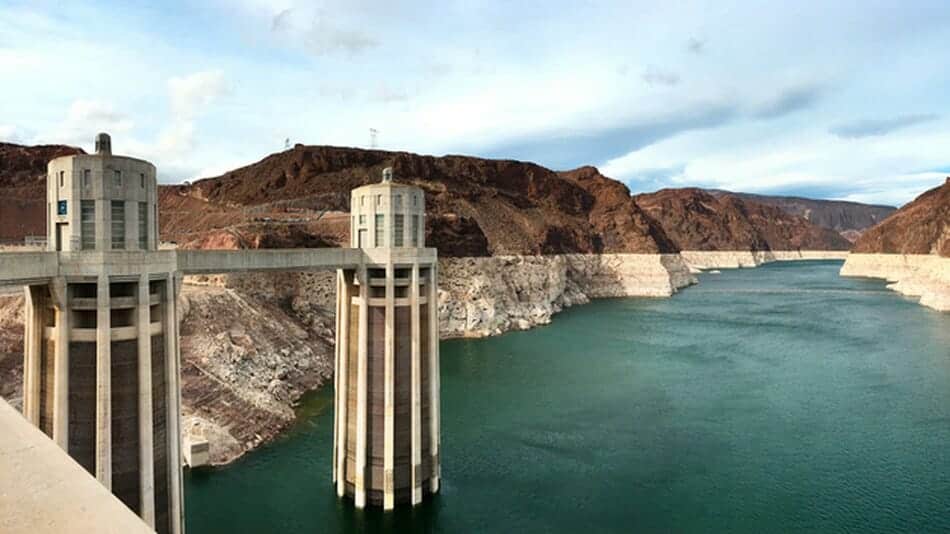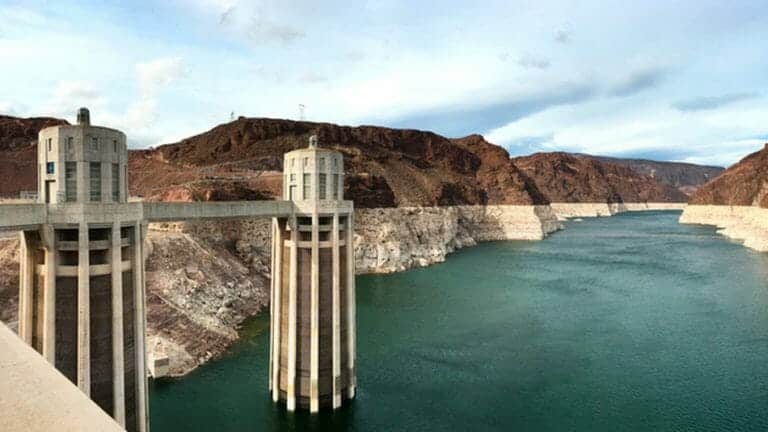Photo: Colorado River water held back by the Hoover Dam. IMAGE: SHUTTERSTOCK / ROCKET PHOTOS – HQ STOCK
Reprinted from 2018 for its still-current relevance. —ed.
An hour’s drive from Las Vegas stands America’s Hoover Dam, a commanding barrier of concrete holding back the trillions of gallons of Colorado River water held inside Lake Mead.
The dam is a proud place, built by thousands of hands and with 5 million barrels of concrete. Its golden elevator doors, Gotham-esque pillars, and stoic guardian angel statues line the lofty walkways atop the structure. A U.S. flag beating patriotically over the desert gets swapped out every few days, and then put out for sale in the visitor center.
Yet, in the 80 years since the great dam’s completion, the 1,450-mile Colorado River – which sustains some 40 million Americans in places like Phoenix, Las Vegas, and Los Angeles — has been gradually growing weaker, and the water level beyond the noble dam has fallen considerably over the last two decades. The writing is easily spotted on the steep rocky walls of the Lake Mead reservoir, where a bathtub-like ring shows where the water once sat during more fruitful times.
Today, however, the water sits 150-feet below that line, and human-caused climate change is a major reason why.
Over the last century, the river’s flow has declined by around […]
Full article: The Colorado River is evaporating, and climate change is largely to blame
More about the Lake Mead reservoir and the Colorado River:
- Follow a gallon of water from Lake Mead to a Las Vegas tap
- What drought? These states are gearing up to draw more water from the Colorado.
- The Colorado River is evaporating, climate change largely to blame
- Plan for Colorado River draws on Blue Mesa, Flaming Gorge reservoirs
- Rising temperatures sucking water out of the Colorado River
Related content by our editor:



